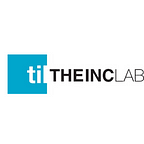IoT in Farming: The Future of Sustainable Agriculture
The human population has grown exponentially, and, with the rapid growth, the demand for food has also increased. The agricultural industry is under constant pressure to produce more food as fast as possible. According to the UN Food and Agricultural Organisation (FAO), the world will need to produce 70% more food by 2050. With shrinking farmlands and the depletion of resources, sustainability and increasing farm yield have become critical. IoT solutions offer farmers the ability to produce higher yields, optimize resource consumption, and grow more sustainable crops for the changing climate.
IoT solutions include the use of autonomous machinery, temperature and moisture sensors, aerial drone imaging, and GPS technology. These devices allow farms to have precise data that increases profitability, efficiency, and a more environmentally friendly approach. Due to the data being collected from IoT devices, farmers don’t have to apply fertilizers, water, and pesticides across the majority of their crops. Instead, they can now apply the minimum requirements needed to treat unique problems in specifically targeted areas. Simply put, using precision agriculture, farmers use fewer resources to grow higher yields of crops.
From Crop Management to Animal Welfare: A Case Study
Crop yields are not the only area of agriculture IoT solutions are being implemented. In a recent case study to develop IoT systems for the welfare monitoring of farm animals, a team of engineers created a solution for intensive farming practices. The farmer needed a device that could be used for environmental monitoring directed at animals, specifically young chickens. Using a system that monitored a variety of environmental conditions such as air temperature, light intensity distribution, and humidity, they could determine the optimal conditions for growth and make adjustments to the living conditions as needed. Additionally, the use of a mems microphone in combination with AI algorithms and signal processing allowed for the monitoring of bird stress levels that were determined by the animal’s voice.
Farmland Conservation with Urban Agriculture
Despite solutions for large-scale agriculture, there is still the issue of decreasing annual farmland due to climate change and other factors. According to the American Farmland Trust (AFT), Farmland in the United States has decreased by 31 million acres over the past two decades. In less than a generation, the U.S. has lost 11 million acres of farmland due to the expansion of U.S. cities and towns. As the climate continues to change and the land available continues to shrink, the agricultural industry must also adapt in several innovative ways. Urban Agriculture, a process to grow and develop crops using vertical production, warehouse farms, community gardens, rooftop farms, hydroponic, aeroponic, and aquaponic facilities, is one way that the agricultural industry and local farmers alike are adapting to the lack of useable farmland. IoT solutions in spaces like these are crucial due to the margin of error.
As these climate challenges evolve, the agricultural industry can and must do more to address food security throughout a multitude of countries, increase the resilience of crops and agriculture practices, and improve eco-friendly sustainability. Through continuous advances in IoT, collective political and social actions, and more bi-partisan decision-making, the U.S. has the potential to lead the way in discovering solutions to the ever-increasing demand for food.
Make sure you subscribe for more Emerging Tech content delivered right to your inbox! In the mean time visit our YouTube channel and website for more #emergingtech content from TIL!
